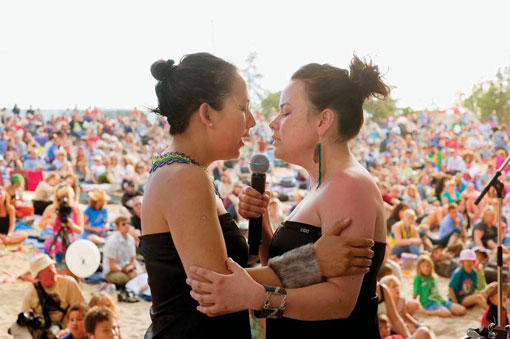If you’ll go anywhere for great folk music, put Yellowknife, in Canada’s Northwest Territories (NWT), on your July itinerary. But a warning: it will test your limits.
Yellowknife is where Folk on the Rocks holds its annual festival. Founded by Rod Russell and his band in 1980, the three-day festival takes place every third weekend in July on the shores of Long Lake.
Executive director Penny Ruvinsky says the festival tries “to encourage and support Northern talent.” About half of the 30 artists in each year’s lineup are “Northern”—that is, from Canada’s northern territories, and Alaska or northern countries (Greenland, Scandinavia, Russia). The remainder are from just about everywhere else.
Past performers have come from as far away as Australia and Ireland, and some of the more notable artists have included David Essig, a songwriter and performer of contemporary folk music; Kulavak, a duo of Inuit women whose “throatsinging” was showcased at the 2010 Olympics in Vancouver; and Pat Braden, a folk artist originally from Yellowknife.
Although 5,000 attendees seems puny in comparison to other major festivals, it is quite an organizing feat for this small community of 19,000 in the continent’s northernmost regions. The drive from Edmonton, Alberta—one of the closest major cities—can take more than 20 hours.
This year’s concerts began July 19 with “Rock the Folk,” a contest among local bands. The winner earned a performance spot in the festival and a $1,000 grant toward a locally produced demo. It continued with “Warm the Rocks,” pre-weekend shows at downtown venues, and “Folk in the Park,” a free public concert featuring a visiting artist.
Ticket prices range from $80 for the day to $105 for the weekend. A welcome by traditional drummers from Dene, one of the largest Indigenous groups in Canada’s Arctic, kicks off the formal program.
Don’t forget to bring warm clothes. July is one of the warmest months in the NWT, but average temperatures hover at 63 degrees F (17 degrees C). That’s tropical compared to January, when the mercury plunges to -17 F (-27 C).






